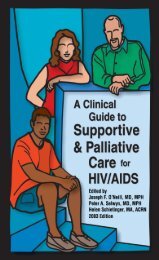Table 6. Advantages and Disadvantages of Antiretroviral ...
Table 6. Advantages and Disadvantages of Antiretroviral ...
Table 6. Advantages and Disadvantages of Antiretroviral ...
Create successful ePaper yourself
Turn your PDF publications into a flip-book with our unique Google optimized e-Paper software.
<strong>Table</strong> <strong>6.</strong> <strong>Advantages</strong> <strong>and</strong> <strong>Disadvantages</strong> <strong>of</strong> <strong>Antiretroviral</strong> Components Recommended as Initial <strong>Antiretroviral</strong> Therapy<br />
Page 2 <strong>of</strong> 3<br />
January 10, 2011<br />
ARV Class<br />
ARV<br />
Agent(s)<br />
<strong>Advantages</strong><br />
<strong>Disadvantages</strong><br />
DRV/r • Once-daily dosing • Skin rash<br />
• Food requirement<br />
FPV • No food effect • Skin rash<br />
• Potential for PI resistance with failure, including emergence <strong>of</strong> mutations<br />
that can cause DRV cross resistance<br />
FPV/r<br />
LPV/r<br />
SQV/r<br />
• Twice-daily dosing resulted in efficacy<br />
comparable to LPV/r<br />
• RTV boosting: higher trough APV<br />
concentration <strong>and</strong> greater antiviral effect<br />
• Once-daily dosing possible with RTV 100<br />
mg or 200 mg daily<br />
• No food effect<br />
• C<strong>of</strong>ormulated<br />
• No food requirement<br />
• Recommended PI in pregnant women<br />
(twice daily only)<br />
• Greater CD4 count increase than with<br />
EFV-based regimens<br />
• Efficacy similar to LPV/r with less<br />
hyperlipidemia<br />
• Skin rash<br />
• Hyperlipidemia<br />
• Once-daily dosing results in lower APV concentrations than twice-daily<br />
dosing<br />
• For FPV 1,400 mg + RTV 200 mg: requires 200 mg <strong>of</strong> RTV <strong>and</strong> no<br />
c<strong>of</strong>ormulation<br />
• Fewer data on FPV 1,400 mg + RTV 100 mg dose than on DRV/r <strong>and</strong><br />
ATV/r<br />
• Requires 200 mg per day <strong>of</strong> RTV<br />
• Lower drug exposure in pregnant women—may need dose increase in<br />
third trimester<br />
• Once-daily dosing not recommended in pregnant women<br />
• Once-daily dosing: lower trough concentration than twice-daily dosing<br />
• Possible higher risk <strong>of</strong> MI associated with cumulative use <strong>of</strong> LPV/r<br />
• PR <strong>and</strong> QT interval prolongation have been reported. Use with caution in<br />
patients at risk <strong>of</strong> cardiac conduction abnormalities or receiving other<br />
drugs with similar effect.<br />
• Highest pill burden among available PI regimens (6 pills per day)<br />
• Requires 200 mg <strong>of</strong> RTV<br />
• Food requirement<br />
• PR <strong>and</strong>/or QT interval prolongations in a healthy volunteer study<br />
• Pretreatment ECG recommended<br />
• SQV/r is not recommended for patients with any <strong>of</strong> the following<br />
conditions: (1) congenital or acquired QT prolongation; (2) pretreatment<br />
ECG >450 msec; (3) on concomitant therapy with other drugs that prolong<br />
QT interval; (4) complete AV block without implanted pacemakers; (5)<br />
risk <strong>of</strong> complete AV block.<br />
INSTI RAL • Virologic response noninferior to EFV<br />
• Fewer drug-related adverse events <strong>and</strong><br />
lipid changes than EFV<br />
• No food effect<br />
• Fewer drug-drug interactions than PI- or<br />
NNRTI-based regimens<br />
• Less long-term experience in ART-naïve patients than with boosted PI- or<br />
NNRTI-based regimens<br />
• Twice-daily dosing<br />
• Lower genetic barrier to resistance than with boosted PI-based regimens<br />
• No data with NRTIs other than TDF/FTC in ART-naïve patients<br />
CCR5<br />
Antagonist<br />
MVC<br />
• Virologic response noninferior to EFV in<br />
post-hoc analysis <strong>of</strong> MERIT study (See<br />
text.)<br />
• Fewer adverse effects than EFV<br />
• Requires viral tropism testing prior to initiation <strong>of</strong> therapy with additional<br />
cost <strong>and</strong> possible delay in initiation <strong>of</strong> therapy<br />
• More MVC-treated than EFV-treated patients discontinued therapy due to<br />
lack <strong>of</strong> efficacy in MERIT study<br />
• Less long-term experience in ART-naïve patients than with boosted PI- or<br />
NNRTI-based regimens<br />
• Limited experience with 2-NRTI other than ZDV/3TC<br />
• Twice-daily dosing<br />
• CYP 3A4 substrate, dosing depends on presence or absence <strong>of</strong> concomitant<br />
CYP3A4 inducer(s) or inhibitor(s)<br />
Dual NRTIs<br />
Dual-NRTI Class Advantage:<br />
Established backbone <strong>of</strong> combination ART<br />
Dual-NRTI Class Disadvantage:<br />
Rare but serious cases <strong>of</strong> lactic acidosis with hepatic steatosis reported with<br />
d4T, ddI, <strong>and</strong> ZDV<br />
Guidelines for the Use <strong>of</strong> <strong>Antiretroviral</strong> Agents in HIV-1-Infected Adults <strong>and</strong> Adolescents Page 10
















